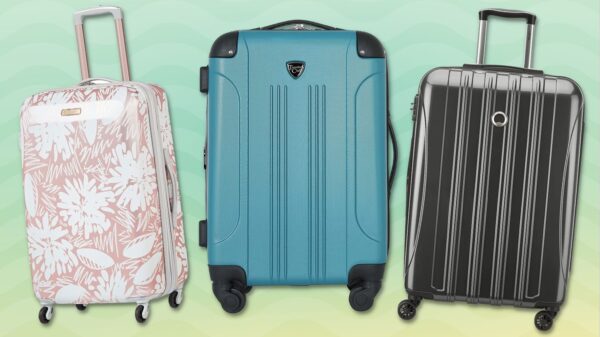
What are the Necessary Steps to Prep Your Luggage for Wheel Replacement

Properly prepping your luggage for wheel replacement is essential to ensure the longevity and functionality of your travel gear. Start by gathering all the necessary tools and materials, such as a screwdriver, replacement wheels, and thread-locking adhesive. This preparation step saves time and hassle during the actual replacement process.
Next, lay your suitcase on a flat and stable surface to prevent any movement while you work. Carefully inspect and remove the damaged wheels, using pliers if they are stuck, taking care not to damage the wheel housing. After removing the old wheels, thoroughly clean the wheel housing to make sure you have a smooth fit for the new ones. Attach the suitcase replacement wheels by Suitcase Repair or any other repair shop, securing them firmly with the thread-locking adhesive. Finally, test the new wheels by rolling the suitcase to confirm they are properly installed and functioning well.
Once you have removed the old wheels, install the new ones, ensuring they’re properly aligned. Utilize a small amount of thread-locking adhesive on screws to secure the wheels firmly and prevent them from loosening during travel. Regular maintenance, such as promptly addressing worn-out wheels, contributes greatly to smooth and convenient travel.

Key Takeaways
- Gather all necessary tools and materials beforehand.
- Carefully remove and inspect the damaged wheels.
- Ensure the new wheels are compatible and correctly installed.
Assessing and Removing the Damaged Wheel
Begin by assessing the condition of your suitcase wheels, gather all necessary tools, and follow a step-by-step process for removing the old wheel to ensure a smooth replacement.
Identifying Wheel Damage
Check for signs of wear and tear on the wheels. Look for cracks, breaks, or any unusual noise during movement. Examine if the wheels are misaligned or wobbly.
Check if the suitcase wheels are not spinning smoothly or if there is visible damage like flat spots. Spinner wheels and in-line skate wheels might show different signs, but all require close inspection.
Make sure to identify whether the wheel is riveted or screwed, as this will affect the removal process.
Tools and Materials Needed
Prepare the necessary tools and materials for the replacement. A screwdriver, pliers, and lubricant are essential. Depending on the wheel type, additional tools might be needed, such as a socket wrench or a multi-tool.
Have replacement wheels, screws, nuts, and washers ready. For lubrication, a silicone-based product can be beneficial. Create a small workspace and ensure all tools and materials are easily accessible.
Maintain an organized setup to avoid any parts being misplaced during the process.
Removing the Old Wheel
Start by placing the suitcase on a flat and even surface. Using the screwdriver or pliers, remove any screws or bolts securing the damaged wheel. For a riveted wheel, drill out the rivet carefully to avoid damaging the wheel housing.
Gently pull the wheel away from the suitcase. If it feels stuck, wiggle it lightly to loosen it. Remove any remaining components like the axle or washers.
After removing the old wheel, clean any debris from the wheel housing to ensure the new wheel fits smoothly. Proper removal sets the stage for a successful replacement process.
Selecting and Installing the New Wheel
This section details how to choose the right replacement wheels for your luggage and the steps to properly install them, ensuring a smooth and durable repair process.
Choosing the Right Replacement Wheels
Selecting suitable replacement wheels is crucial for the proper functioning and longevity of your luggage. Start by examining the manufacturer’s specifications to know the size and material needed. Compatibility with your luggage model ensures a perfect fit.
Two common types of wheels are spinner wheels, which offer 360-degree rotation, and rollerblade wheels, known for their durability. Check if you need bolts or screws for attachment.
Installing the New Wheel
Before installation, gather the needed tools, such as a screwdriver, wrench, and silicone-based lubricant. Position the luggage on a stable surface to avoid any mishaps. This arrangement will guarantee a safe working environment when replacing the wheels.
- Remove the Old Wheels: Use the screwdriver or wrench to detach the old wheels.
- Clean the Hub: Clean the wheel axles and hub with a wire brush to ensure a good fit for the new wheels.
- Attach the New Wheels: Place the new wheels and hand-tighten bolts or screws. Apply a small amount of silicone-based lubricant for smoother movement.
- Final Check: Test the new wheels by rolling the luggage on different surfaces and ensure they are securely attached.
To keep the new wheels in good condition and to replace them if wear and tear develops, it is advisable to do routine inspections. Keeping an eye on the wheels and lubricating them as necessary can assist ensure that your baggage is ready for any future excursions.
Conclusion
Ensuring your luggage is ready for wheel replacement requires the right tools and a stable working environment. By regularly inspecting your wheels for wear and tear, you can address issues promptly and maintain the functionality of your luggage.
Reassembling the components correctly, along with using thread-locking adhesive, guarantees a secure fit. Proper preparation simplifies the process and prolongs the life of your suitcase.













































